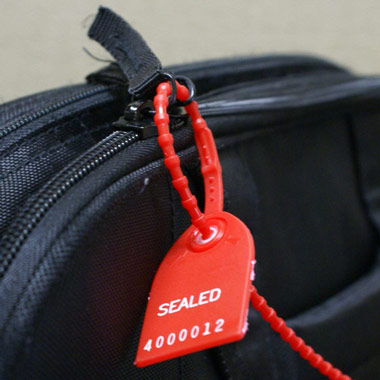Types Of security seals
Plastic security seals

Plastic seals are manufactured using different types of plastic material and are mainly used as an indicator of tampering or unauthorised entry. The design of the plastic seals allows a visual detection, whether a manipulation attempt or a theft has taken place. As a broken plastic security seal indicates tampering, they are frequently referred to as indicative seals.
There are different categories of plastic security seals but they are mainly designed as adjustable length seals (also called variable length seals or pull-tight seals), fix-length seals, padlock seals or tote box seals. Depending on the application, type of container that should be sealed and requirements on the security level, a type of plastic seal is better for the purpose as the others. Typical applications are, for example, bags, trolleys for the airline and catering sector, boxes, drums, roll cages, etc.
Usually the plastic security seals can be customized with a customer logo and their uniqueness is guaranteed thanks to the unique numbering and barcode.
The different colours available for the plastic security seals allow not only a personalization of the seal but also may ease the customer’s logistic processes.
Security Seal made of metal
Metal band /Metal Clip seals

manufactured from a metal material are generally used to provide barrier protection.
Bolt seals

offer the highest level of barrier protection and are manufactured in two metal parts that are designed to fit together via a locking mechanism.
Cable seals

consist of a steel cable which is fixed at one end into the locking mechanism of the seal body.
Re-usable Security Seals
Re-usable seals consist of a main re-usable body which can be sealed with a single use seal.
Electronic seals
Electronic seals are typically reusable. Generate a unique time, date and number each time the seal is closed and opened. Register and record all sealing and opening events.
Tamper Evident Labels
Tamper Evident labels can be physically stuck to a surface and give the user the option of leaving a residue, disintegrating, and/or displaying an indication of attempted removal or tampering.